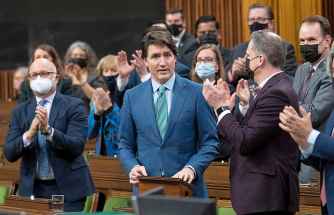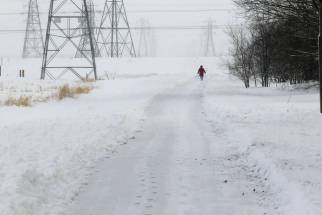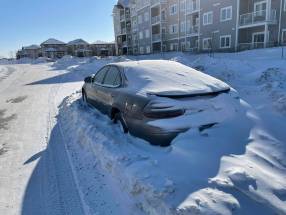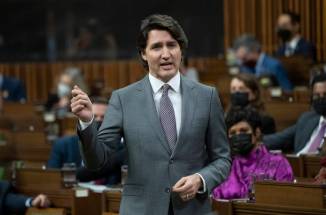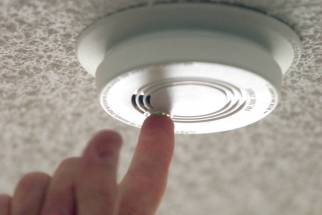PM says Emergencies Act is ‘last resort,’ civil liberties group files court action
Read this article for free:
or
Already have an account? Log in here »
To continue reading, please subscribe:
Monthly Digital Subscription
$0 for the first 4 weeks*
- Enjoy unlimited reading on winnipegfreepress.com
- Read the E-Edition, our digital replica newspaper
- Access News Break, our award-winning app
- Play interactive puzzles
*No charge for 4 weeks then price increases to the regular rate of $19.00 plus GST every four weeks. Offer available to new and qualified returning subscribers only. Cancel any time.
Monthly Digital Subscription
$4.75/week*
- Enjoy unlimited reading on winnipegfreepress.com
- Read the E-Edition, our digital replica newspaper
- Access News Break, our award-winning app
- Play interactive puzzles
*Billed as $19 plus GST every four weeks. Cancel any time.
To continue reading, please subscribe:
Add Free Press access to your Brandon Sun subscription for only an additional
$1 for the first 4 weeks*
*Your next subscription payment will increase by $1.00 and you will be charged $16.99 plus GST for four weeks. After four weeks, your payment will increase to $23.99 plus GST every four weeks.
Read unlimited articles for free today:
or
Already have an account? Log in here »
Hey there, time traveller!
This article was published 17/02/2022 (1389 days ago), so information in it may no longer be current.
OTTAWA – The federal government faced a constitutional challenge Thursday over its historic invocation of the Emergencies Act, as police began to move on protesters with large trucks paralyzing the heart of the national capital.
Prime Minister Justin Trudeau said using the emergencies law was a measure of last resort to bring an end to the illegal and undemocratic blockades that had harmed Canadians for nearly three weeks.
He made the remarks during debate in the House of Commons over his government’s decision to use the law for the first time since its introduction in 1988. The Conservatives accused the prime minister of failing to try to de-escalate the conflict before turning to emergency powers.
Trudeau said using the act was not the first, second or even third choice of the government.
“We did it to protect families and small businesses, to protect jobs and the economy,” the prime minister said. “We did it because the situation could not be dealt with under any other law in Canada.”
Hours later, the federal government was told it would face court action over its decision, as the Canadian Civil Liberties Association announced it was seeking a judicial review of the government’s invocation of the act.
The group said at a Toronto news conference it did not want to minimize the effects of the protests across the country, but added it was unclear that the demonstrations endanger the lives, health or safety of Canadians so seriously that they constitute a national emergency.
“The government has brought in an extreme measure that should be reserved for national emergencies, a legal standard that has not been met. Emergency powers cannot and must not be normalized,” said Noa Mendelsohn Aviv, the civil liberties association’s executive director.
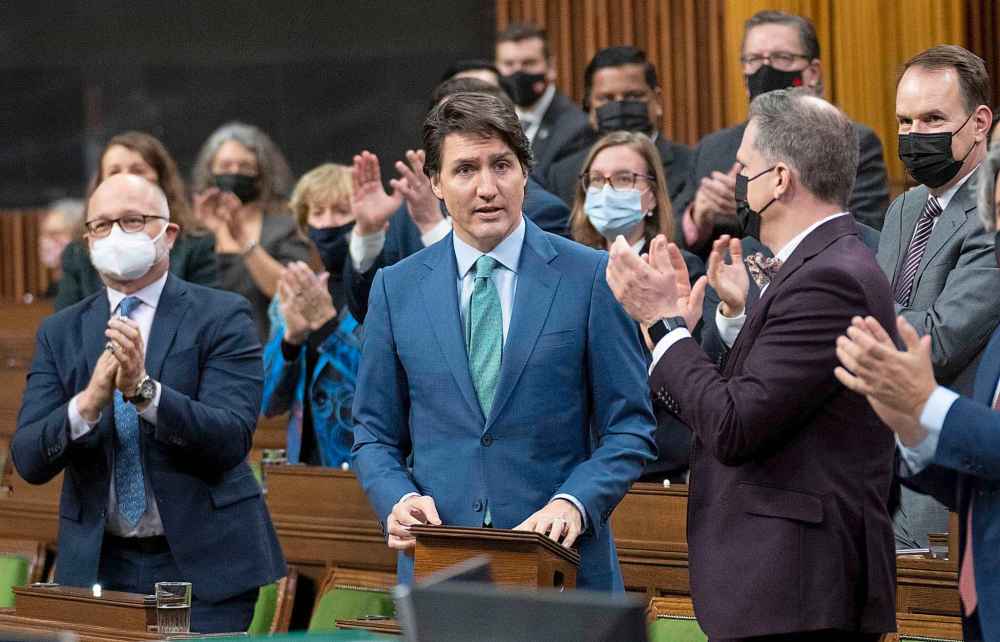
Police deal with complex law-enforcement issues every day and have cleared multiple border blockades across the country without emergency powers, the association said.
The group’s criminal justice director, Abby Deshman, said the Emergencies Act orders do not apply only in Ottawa and actually affect the rights of every Canadian.
The group believes the measures are clearly unconstitutional and it will be asking the courts to step in to defend the rule of law and the constitutional rights of all people across the country, she said.
“Local police across this country have cleared several highly disruptive border blockades and are successfully managing numerous other protesters in communities across the country, all without emergency powers,” Deshman said.
Through the Emergencies Act, new powers have been granted to freeze bank accounts of protest participants and bar people from assembling in specific places or joining protests that threaten trade, critical infrastructure, individuals or property.
“We did it because the situation could not be dealt with under any other law in Canada.”–Prime Minister Justin Trudeau
It is also now illegal to bring children to within 500 metres of the blockades or provide supplies or property to participants.
The new powers took effect earlier this week but the House of Commons and the Senate must both vote to confirm use of the emergencies law.
The House debate will continue through the weekend and Monday with a vote planned for 8 p.m. ET that day. If the motion fails, the act will be suspended immediately.
The Senate will begin debating the motion Friday and at some point hold its own vote.
Trudeau said the act is not prohibiting lawful protest, including by those who disagree with the government’s management of the COVID-19 pandemic, but he said these blockades are illegal and partly funded by foreign nationals, and threaten Canada’s economy, its trading relationships and public safety.
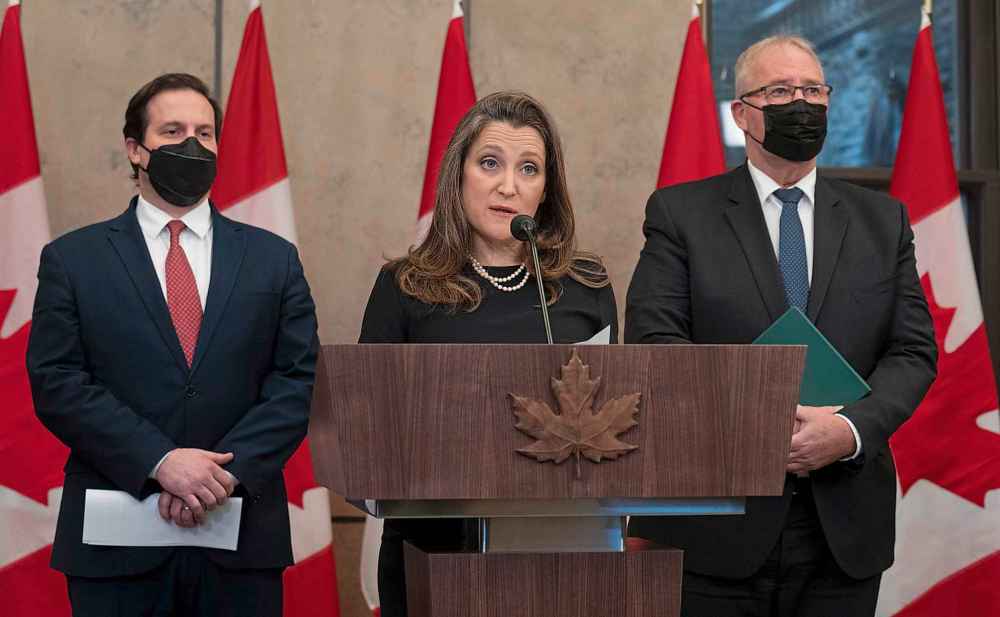
Deputy Prime Minister Chrystia Freeland said at a news conference bank accounts had already been frozen and more will be put on hold in the coming days. But she refused to say how many, or even declare if accounts could be frozen for people who aren’t participating in the blockade but who donated to the convoy’s various online fundraisers.
The Emergencies Act was passed in 1988 to replace the War Measures Act, which had been used to suspend civil liberties during both of the world wars and the 1970 October Crisis. The new act has more checks and balances than the previous one, including parliamentary oversight and a requirement to respect the Charter of Rights and Freedoms.
Interim Conservative Leader Candice Bergen said her party does not support use of the act because the government has not proven the demonstrations pose a serious threat to Canada’s sovereignty, security or territorial integrity and couldn’t be dealt with under existing laws.
“The prime minister is doing this to save his own political skin,” she said. “But Mr. Speaker, this is not a game. It comes at the cost to Canadians’ rights and freedoms.”
Bergen said many of those in the protest are neighbours, constituents and Canadians who just want to be heard and “given even just a little respect” by Trudeau.
“Emergency powers cannot and must not be normalized.”–Noa Mendelsohn Aviv, Canadian Civil Liberties Association
She repeated her allegation that Trudeau himself was to blame for raising the temperature of the convoy by refusing to meet with them and accused the prime minister of hiding for the first week of the blockade.
That prompted Green MP Elizabeth May to counter that Trudeau wasn’t hiding — he had COVID-19 and was in isolation.
Bergen, who took over as interim leader Feb. 2 following a caucus vote against Erin O’Toole, supported the demonstration in the early days, posing for photos with participants and dining with some of them at a restaurant in Ottawa. She said reports of hateful symbols and harassing behaviour were the exception within the crowd, not the norm, and asked Trudeau to extend an “olive branch” out to the demonstrators in a bid to end the impasse.
The Conservatives also pushed a motion asking the government for a timeline to end federal pandemic restrictions and mandates, but the motion failed when the Liberals and NDP voted against it.
As the Ottawa blockade stretched into its second week, Bergen said it was time for the convoy to go home because protesters had been heard.
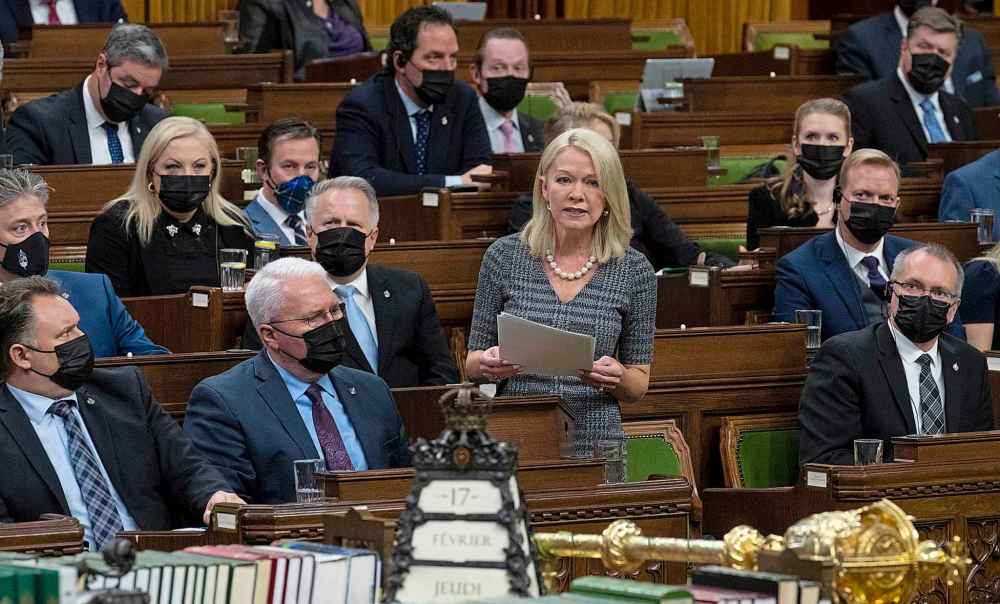
On Thursday, Bergen also turned her criticism on NDP Leader Jagmeet Singh. Singh said his party will reluctantly support the use of the act because the blockades are a national crisis, even though the NDP is critical of Trudeau for allowing things to get this far.
Bergen said “history will not be kind to the leader of the NDP or his members on this particular question.”
Singh pushed back at Bergen for supporting the convoy at any point, when it is “no secret that the goal of this convoy, posted brazenly on their website, reiterated as recently as earlier this week in a press conference, was to overthrow a democratically elected government.”
“The interim leader of the Conservative Party, says, ‘We have heard you, we will keep standing up for you.’ Do you regret endorsing a convoy that is attacking the fundamental democracy of our country? Do you regret endorsing and supporting an occupation that has harassed citizens?”
Liberal MP Yasir Naqvi, whose Ottawa Centre riding includes Parliament Hill and downtown Ottawa, said his community “has been held hostage” by demonstrations that are not peaceful. He asked whether MPs who had supported the convoy and encouraged protesters to keep honking would tolerate demonstrators in their ridings, harassing their constituents.
“This is not a game. It comes at the cost to Canadians’ rights and freedoms.”–Interim Conservative Leader Candice Bergen
This report by The Canadian Press was first published Feb. 17, 2022.

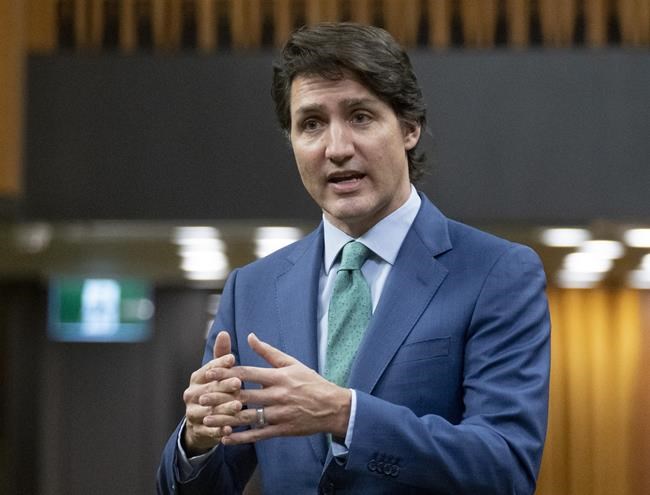
The Emergencies Act is in effect. Here’s what that means.
OTTAWA—The historic use of the Emergencies Act landed with a bang this week. And now, police have special powers to end the so-called “Freedom Convoy” occupation in Canada’s capital city that has endured for almost three weeks.
Here’s everything we know about the measures the federal government created under the act, how they might be applied, and what could happen next.
OTTAWA—The historic use of the Emergencies Act landed with a bang this week. And now, police have special powers to end the so-called “Freedom Convoy” occupation in Canada’s capital city that has endured for almost three weeks.
Here’s everything we know about the measures the federal government created under the act, how they might be applied, and what could happen next.
“Unlawful” assemblies are now banned
The government declared a “public order emergency” on Monday night, and late Tuesday it published the precise regulations that Prime Minister Justin Trudeau and his cabinet believe are necessary to deal with the crisis.
The rules ban participation in public gatherings “that may reasonably be expected to lead to a breach of the peace,” which officials are now referring to as an “unlawful” assembly. This is defined in the regulations as any protest that either causes the “serious disruption” of people’s movement or the flow of goods and trade, interferes with the functioning of critical infrastructure like airports, utilities, border crossings and hospitals, or supports the threat or use of “serious violence.”
The regulations also ban bringing anyone under age 18 to unlawful protests. That’s significant to the convoy occupation in Ottawa, where police say children are living in as many as 100 trucks. The Children’s Aid Society has urged parents at the demonstration who might get arrested to find “alternative care arrangements” for their children.
Foreigners are barred from entering Canada if they intend to take part in an unlawful assembly, and from travelling to or within areas where such an assembly is taking place. The regulations also prohibit people from using “property” to help unlawful protesters.
The act says people who violate the orders can face fines of up to $5,000 and be jailed for up to five years.
Finally, the regulations include economic measures that put the onus on financial institutions to determine if their customers are participating in an unlawful assembly, and to freeze their accounts or suspend their insurance if they are.
What counts as a “unlawful” assembly, and who decides?
Government ministers and officials have stressed repeatedly that they don’t decide which protests are unlawful under the act — the police do. That appears to be the case in Ottawa, where local police distributed flyers on Wednesday telling people blocking the street in front of Parliament Hill with vehicles that they must leave or face the prospect of arrest.
The flyers warn that those vehicles could be seized, people charged could be barred from travelling to the United States, and that under the Emergencies Act, “anyone coming to Ottawa for the purpose of joining the ongoing demonstration is breaking the law.”
Government officials briefing reporters on condition they weren’t named said Wednesday that the convoy occupation of Ottawa could qualify as an “unlawful” assembly under the Emergencies Act, because of disruptions to local businesses that have shut down. Bill Blair, the federal emergency preparedness minister and former Toronto police chief, also called the situation in Ottawa an “unlawful occupation.”
“Protected” places have been designated
The regulations also name sites that are designated “protected places.” This includes critical infrastructure, the area around Parliament Hill, official government residences like Rideau Hall, and monuments for dead soldiers like the National War Memorial.
But that list is not exhaustive. The regulations give Blair and Public Safety Minister Marco Mendicino the authority to designate “any other place” as “protected” under the act. So far, the government has not announced any.
What’s not clear is if the prohibitions that ban “unlawful” assemblies also apply to these protected places.
Parliament can decide what happens next
The Emergencies Act has built-in parliamentary oversight for these special powers. The government must table motions outlining the declaration of emergency in the House of Commons and Senate within seven days.
It has two sitting days to table copies of the emergency regulations published Tuesday night, which Justice Minister David Lametti said will happen before the end of Thursday. Parliamentarians will then debate the orders and have the power to amend or revoke them.
As it stands, the orders would expire 30 days from Monday, unless cabinet decides to extend them.
“We hope that we will revoke it well before that,” Lametti said.
-Alex Ballingall, Toronto Star







